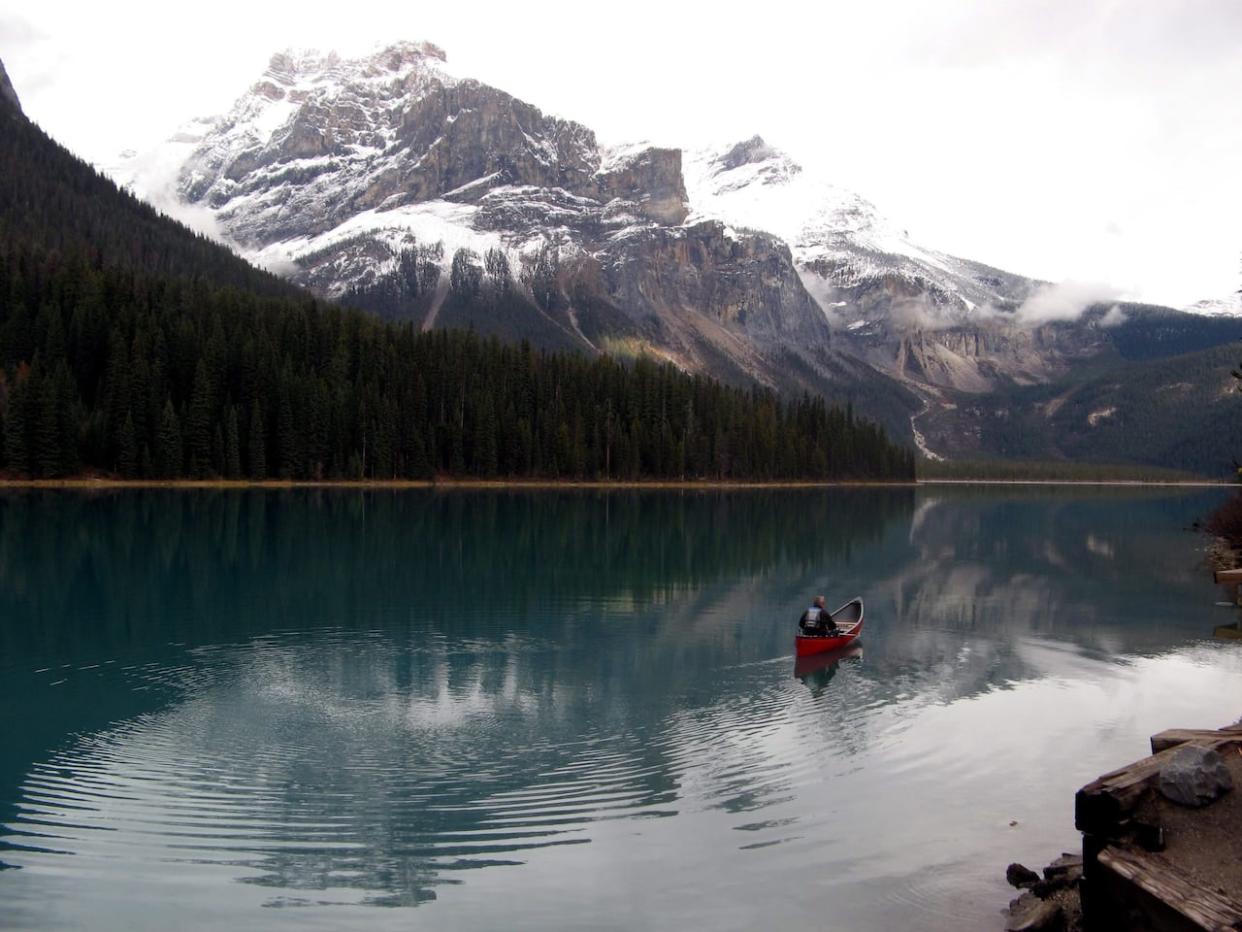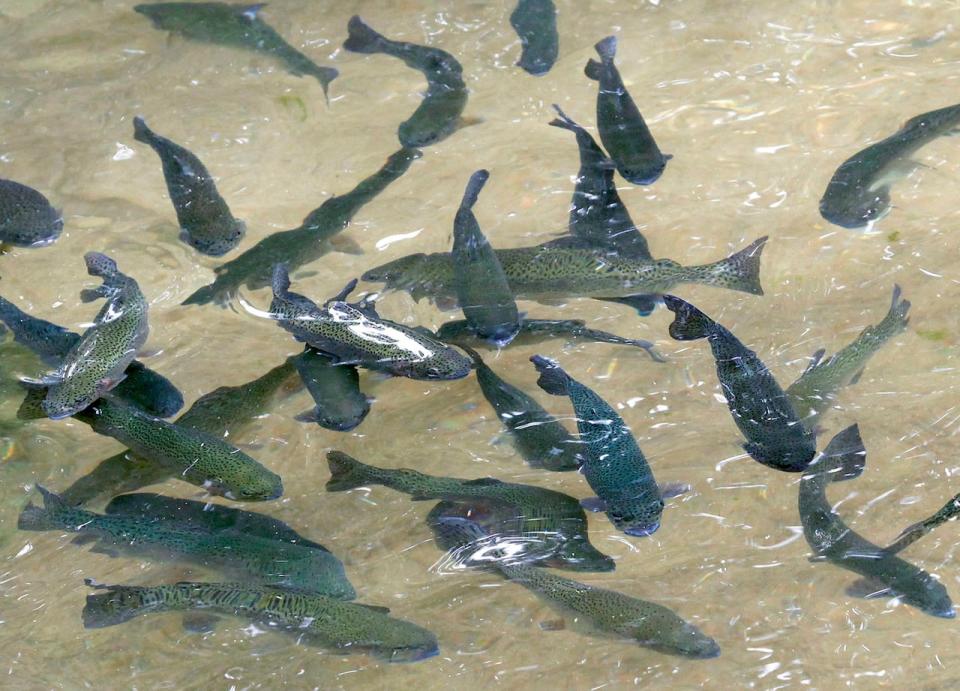Every fish in B.C.'s Emerald Lake may have to be killed after signs of rare parasite detected

Researchers say every fish in B.C.'s Emerald Lake may have to be "sacrificed" after the discovery of a rare parasite in the water.
But first, more testing needs to be done.
Parks Canada says it is investigating a suspected case of whirling disease in Yoho National Park's Emerald Lake.
The disease is a microscopic parasite that affects trout and salmon, and can cause infected fish to swim in a whirling pattern and die prematurely.
The agency says this is the first time the parasite that causes the disease has been detected in the province.
Shelley Humphries, an aquatic ecologist with Parks Canada, said the agency has been on high alert ever since the disease was discovered at a lake in Banff in 2016.
The current round of testing was prompted by the discovery of a deformed brook trout caught by Parks Canada staff in late August.

Shelley Humphries with Parks Canada said the agency has been on high alert ever since whirling disease was discovered at a lake in Banff in 2016. The current round of testing was prompted by the discovery of a deformed brook trout in late August. (File Photo/John Hart/The Associated Press)
Humphries said fish samples from the lake were sent to a lab to check for the presence of the disease, and the results returned on Tuesday indicated it was likely present.
But, she said, it is considered a "suspect case" and more sampling will have to be done in order to confirm the presence of whirling disease.
Lake and connected waters closed for testing
In the meantime, Emerald Lake, Emerald River, Peaceful Pond and One Duck Lake, along with their shorelines and tributaries, are closed to swimming and boats, though surrounding trails will remain open.
Parks Canada says all watercraft, water-related gear and angling are prohibited with fines for violations reaching up to $25,000.
"We want to make sure that if this is a true positive ... visitors to the park don't accidentally spread [the disease] somewhere else," Humphries said.
Parks Canada said that young fish, such as rainbow and brook trout, are especially susceptible to whirling disease, with a mortality rate of about 90 per cent.
The disease does not pose a risk to humans.
Humphries said it will be several weeks before enough samples can be collected and analyzed.
Sacrifice some fish to save the others: Biologist
If whirling disease is confirmed, it could have a devastating impact.
Once established, researchers say, it is impossible to eradicate the parasite, which is a known aquatic invasive species.
In August 2016, the first known Canadian case of whirling disease was detected in Johnson Lake, in Banff National Park. In an effort to stop the spread of the parasite, officials began to pull the fish from the lake and eventually they all had to be killed.
Juan José Alava, principal investigator for the ocean pollution research unit at the University of British Columbia, said that will likely be the outcome in Emerald Lake, as well.
"The best thing they can do is collect all the fish and basically sacrifice them," he said.
Alava said killing the fish, which include salmon and rainbow trout, will have a major impact on fishers and Indigenous groups in the area but the alternative is for the disease to spread even further.
He explained after the fish die prematurely, the parasites spores remain in the environment and contaminate the water's sediment.


